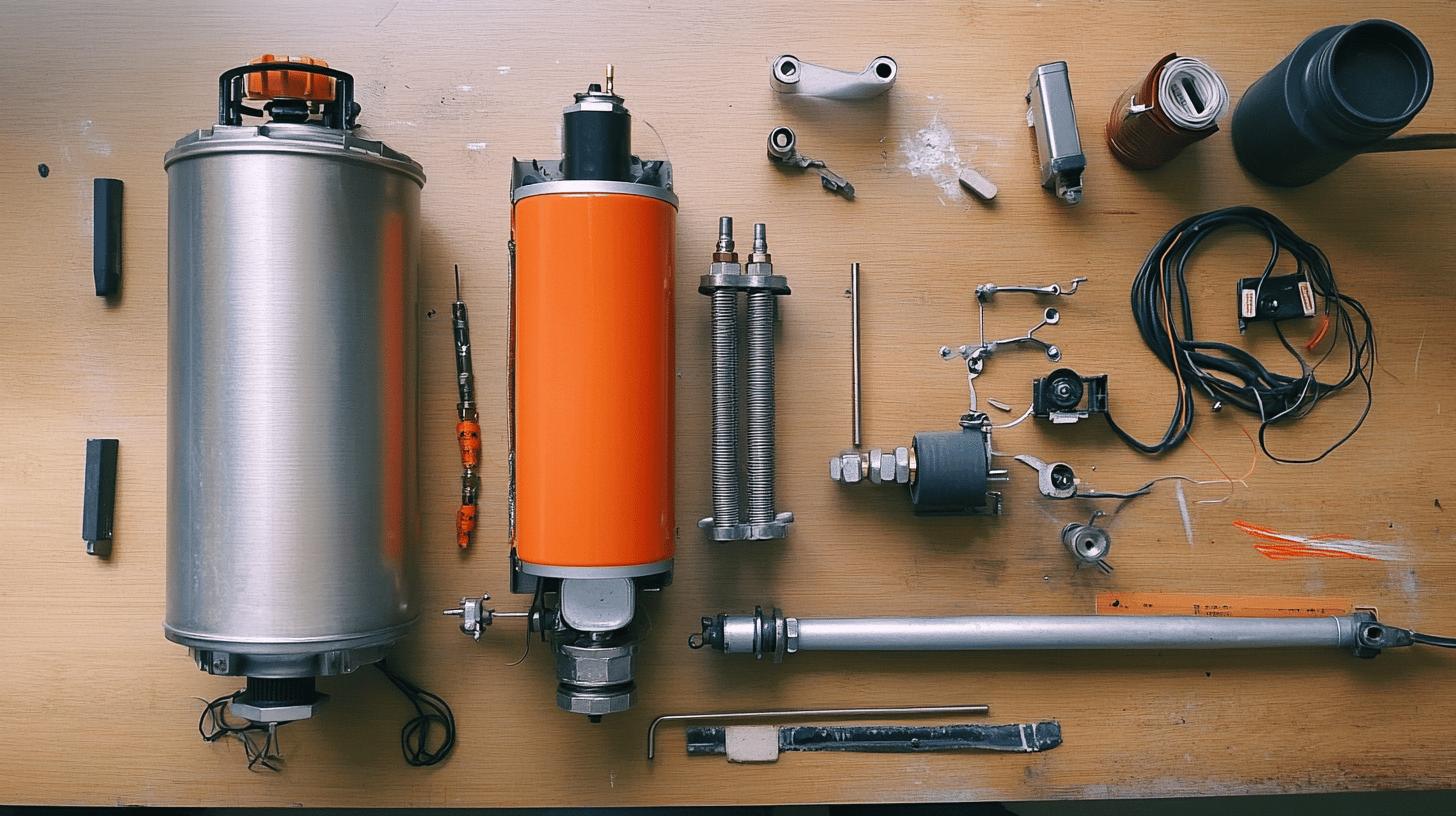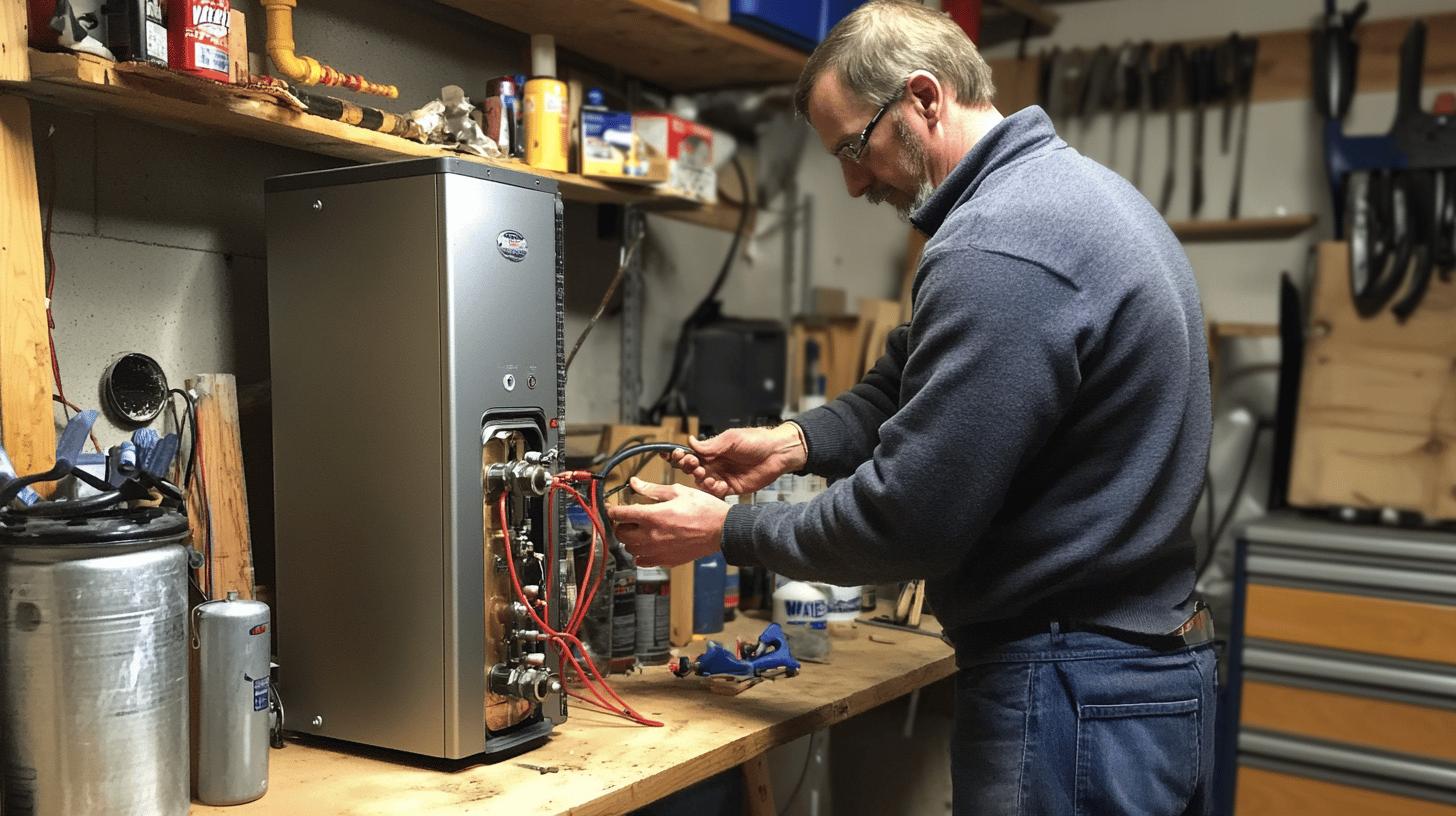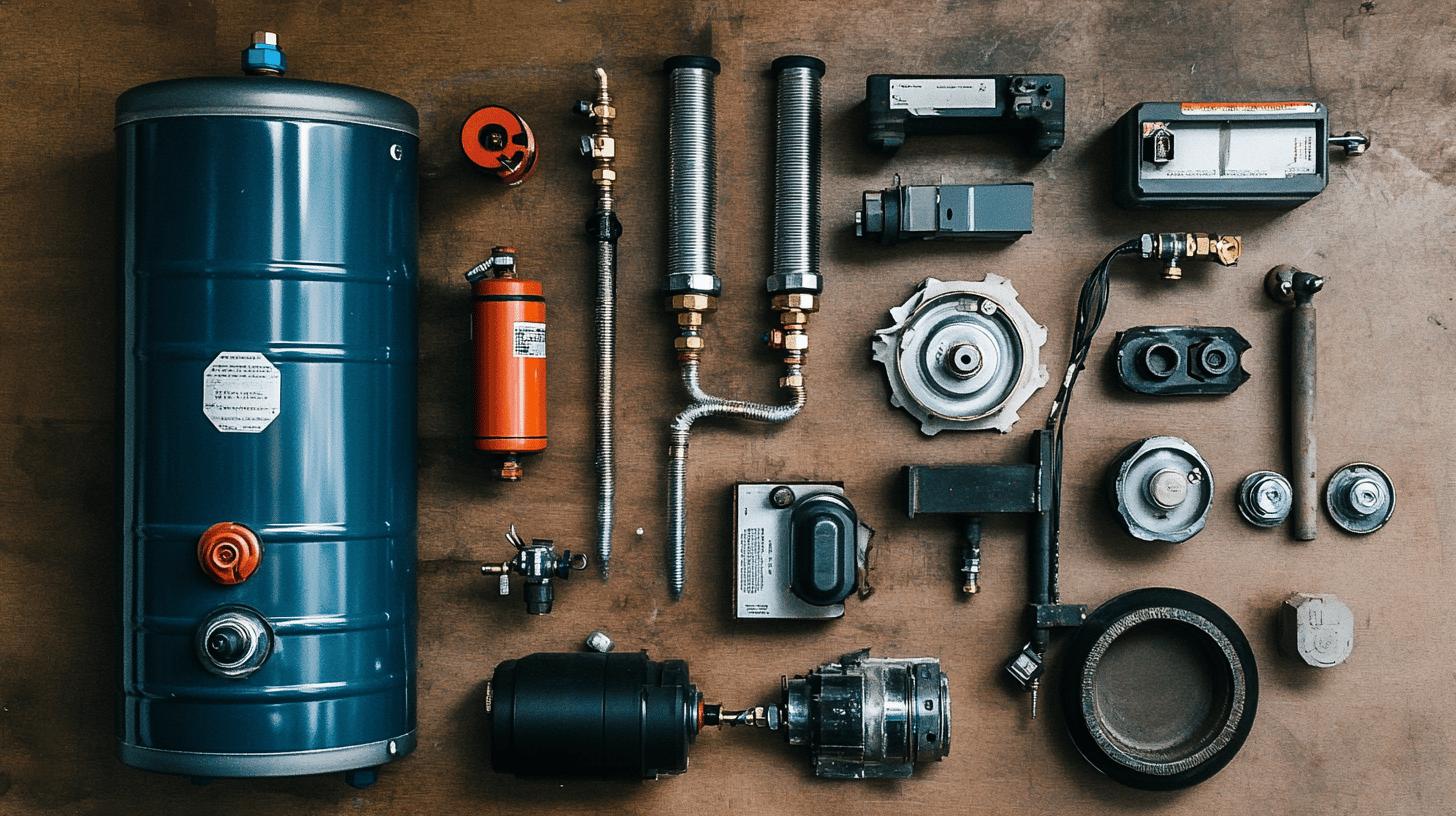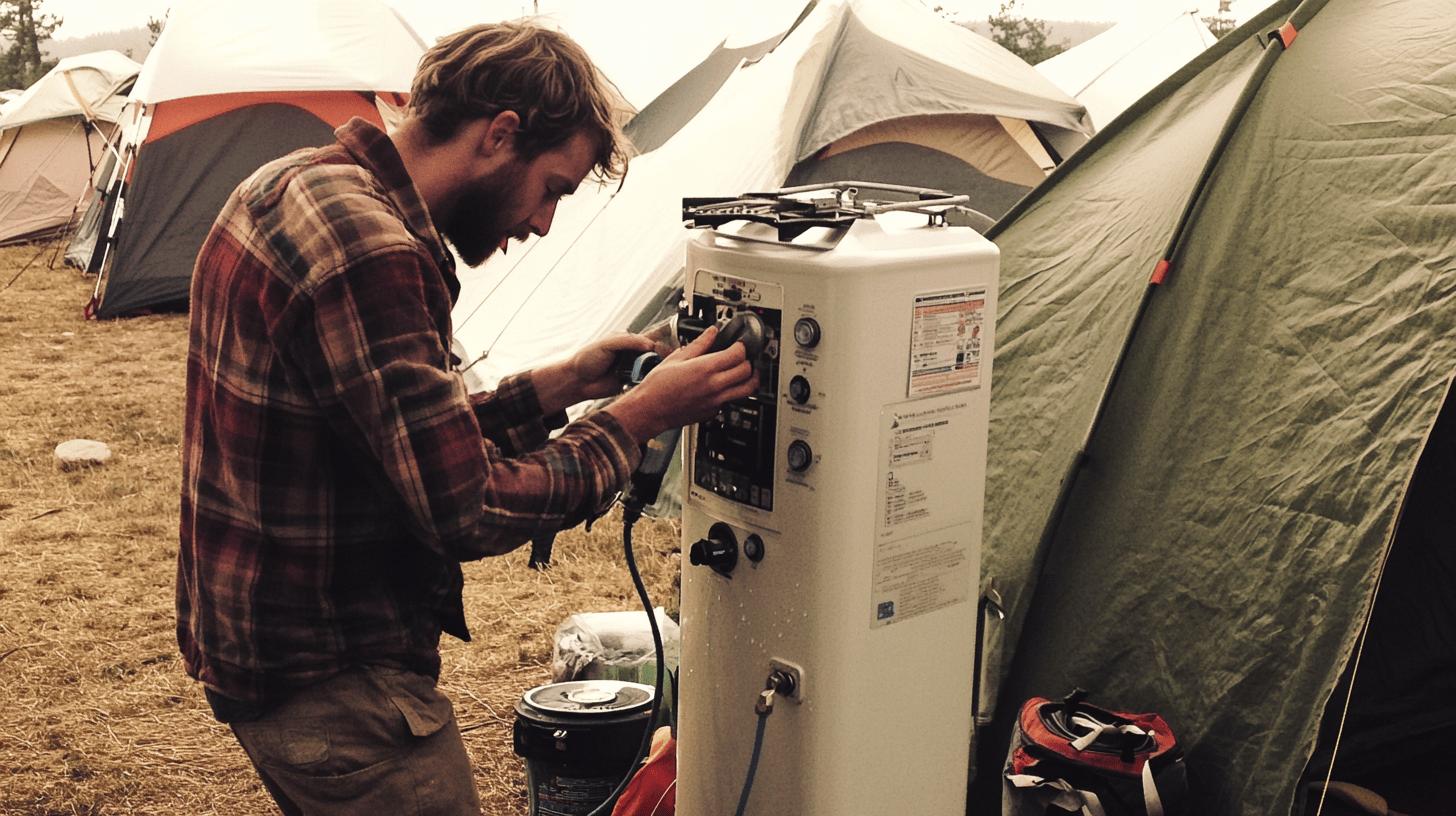TL;DR:
- Key Components: Heating element, water tank/coils, pump.
- Power Sources: Batteries, electrical outlets, propane tanks, solar energy.
- Types:
- Gas tankless (outdoor, propane)
- Electric mini tanks (short-term, indoor)
- Electric tankless (instant hot water)
- Solar portable (eco-friendly)
- Safety Features: Automatic shut-off, overheat protection, flame failure protection.
- Setup Instructions: Connect hoses, power source, and adjust temperature.
- Maintenance: Regular inspections, cleaning, check fuel compatibility and ventilation.
- Usage: Plug in for electric, connect propane for gas, ensure ventilation for gas models.
Have you ever wanted hot water wherever you go? Portable water heaters are the perfect solution! These small devices let you enjoy hot water whether you’re camping or need a backup at home. Want to know how they work? This article will explain their parts and how easy they are to use, so you’ll understand this cool technology. Keep reading to see how portable water heaters can keep you cozy no matter where you are!
Understanding Portable Water Heater Mechanisms
Portable water heaters are small devices that give you hot water whenever you need it. They have three main parts: a heating element, a water tank or coil, and a pump. The heating element can be powered by electricity or gas, with gas heaters usually using propane. The water tank or coil either stores or circulates the water, while the pump makes sure the water flows smoothly through the system.
Power Sources for Portable Water Heaters:
- Batteries
- Electrical outlets
- Propane tanks
- Solar energy
- Vehicle power adapters
These parts work together really well. The heating element warms up the water, while the pump circulates it. The power source keeps everything running smoothly, so you always have hot water when you need it. Portable water heaters are easy to use and super efficient, making them perfect for camping trips and emergency situations.
Components of a Portable Water Heater

A portable water heater has a few key parts: a heating element, a water tank or coil, and a pump. The heating element heats the water and can run on electricity or gas, with propane being a common choice for gas models. The water tank or coil either stores or circulates the hot water so you can get it on demand.
The pump helps maintain a steady water flow by drawing water from the source and pushing it through the heating element, making sure you get a constant stream of hot water.
Portable water heaters can get power from different sources, like batteries, electrical outlets, propane tanks, or even solar energy. Propane models are great for outdoor use where there’s no electricity, while electric models work well indoors. Solar models are eco-friendly and use renewable energy.
Safety features are super important in portable water heaters. They typically include automatic shut-off valves, overheat protection, and flame failure protection to prevent overheating, protect the system, and keep users safe.
Component | Function
— | —
Heating Element | Increases water temperature
Water Tank/Coil | Stores or circulates water
Pump | Ensures consistent water flow
Power Source | Powers the heating element and pump
Safety Features | Prevents overheating and flame failure
These parts work together smoothly and safely, making portable water heaters both versatile and practical.
Types of Portable Water Heaters
Gas tankless models are great for outdoor use because they heat water on the go with a gas burner, usually using propane. They’re perfect for camping trips since they don’t need electrical outlets.
Electric mini tanks are compact, insulated tanks that hold a small amount of hot water. They’re great for short-term needs and can be plugged into standard electrical outlets, making them super convenient for indoor use.
Electric tankless models heat water as you need it, without storing it in a tank. This gives you instant hot water while saving space, and they work well indoors and outdoors as long as you have access to an electrical outlet.
Solar portable water heaters use solar panels to turn sunlight into energy for heating water. These eco-friendly models work well in sunny areas but might require a backup power source on cloudy days.
Benefits of Each Type:
- Gas Tankless: Provides hot water on demand, efficient for outdoor use.
- Electric Mini Tank: Stores a small amount of hot water, ideal for short-term needs.
- Electric Tankless: Heats water as it flows, offering instant hot water and saving space.
- Solar Portable: Eco-friendly, uses renewable energy, reduces carbon footprint.
How to Set Up a Portable Water Heater

To set up your portable water heater, start by connecting the water inlet and outlet hoses. Attach the inlet hose to your cold water source and make sure it’s secure to avoid any leaks. Then, connect the outlet hose to direct the hot water where you want it.
Next, attach the power source. For electric models, plug the unit into a grounded outlet. If you’re using a battery or a propane tank for gas models, follow the manufacturer’s instructions to connect them securely. Always check for leaks or loose connections to keep everything safe.
Finally, set your desired temperature. Use the temperature control knob or digital display to adjust it according to your needs, and run the water for a few minutes to make sure everything is working properly.
- Connect the water inlet hose to the cold water source.
- Attach the outlet hose to direct heated water.
- Plug the unit into an electrical outlet or connect it to a battery.
- Securely attach the propane tank for gas models.
- Adjust the temperature setting and test the water.
Power Sources for Portable Water Heaters
Portable water heaters are super versatile because they can use different power sources. Rechargeable batteries are great for off-grid adventures, giving you hot water anywhere. For indoor use, plugging into an electrical outlet provides a steady power supply.
Gas-powered heaters often use propane tanks since propane burns cleanly and is perfect for outdoor activities. Solar energy is another cool option, where solar panels convert sunlight into power. While solar heaters are eco-friendly and cost-effective, they work best in sunny spots and might need a backup source for cloudy days.
- Batteries: Ideal for off-grid use, portable and rechargeable.
- Electrical outlets: Convenient for indoor use, offers consistent power.
- Propane tanks: Efficient and clean-burning, great for outdoor activities.
- Solar energy: Eco-friendly and cost-effective, reliant on sunlight.
Safety Features in Portable Water Heaters

Automatic shut-off valves and overheat protection are crucial for keeping you safe. The automatic shut-off valve turns off the heater when it reaches a certain temperature, which helps prevent overheating and fire hazards. Overheat protection continuously checks the unit’s temperature to ensure it stays safe for both the heater and the user.
For gas models, flame failure protection is super important. It automatically cuts off the gas supply if the flame goes out, preventing dangerous gas leaks that could cause fires or explosions.
- Automatic Shut-Off Valves: Prevents overheating by turning off the heater.
- Overheat Protection: Controls unit temperature to avoid overheating.
- Flame Failure Protection: Cuts off gas if the flame goes out.
Maintaining a Portable Water Heater
Regular checks are super important. Make sure to inspect your portable water heater every month to ensure everything’s working right. Look for any signs of wear or damage, like leaks or corrosion.
Cleaning is also key. First, turn off the power, disconnect the unit, and drain any leftover water. Use a mild detergent to clean the tank or coil, and clear out any debris from the burner if you have a gas model. This helps prevent mineral buildup and keeps your heater running efficiently.
Troubleshooting common issues can save you both time and money. Always use the right fuel type and ensure good ventilation for gas models. If your electric model isn’t working, check the power sources and connections.
- Fuel Compatibility: Ensure you’re using the correct type of fuel.
- Ventilation: Keep the ventilation system clear.
- Leaks: Tighten hose connections to prevent leaks.
- Power Issues: Check electrical connections and power sources.
Usage Instructions for Portable Water Heaters

To turn on your portable water heater, start by plugging it into a grounded outlet for electric models. If it’s battery-operated, make sure to insert fully charged batteries. For gas models, connect the propane tank, open the valve, and then switch on the unit.
Adjust the temperature using the control knob or digital interface, but be sure to follow the manufacturer’s guidelines to avoid overheating.
For gas-powered models, proper ventilation is key to preventing gas buildup. Set up your heater in a well-ventilated area and make sure the ventilation system isn’t blocked.
- Plug the unit into a grounded outlet or insert charged batteries.
- Connect the propane tank and open the valve for gas models.
- Set the desired temperature with the control knob or interface.
- Ensure proper ventilation for gas models.
How Does a Portable Water Heater Work
A portable water heater works by using a heating element, water tank or coil, pump, and power source to deliver hot water whenever you need it. In electric models, the heating element heats the water through an electrical connection, while gas models use a propane burner.
The water tank stores water, or the coil allows it to flow through and get warmed up. As water comes in, the heating element raises its temperature almost instantly.
The pump is crucial for ensuring smooth water flow, drawing it from the source and circulating it. Without a pump, the water flow would be sluggish and affect how well the heater works.
Power sources like batteries, electrical outlets, propane tanks, and solar energy keep the heating element and pump running smoothly. Each power source is suited for different settings and needs, making sure you have reliable access to hot water.
Feature | Portable vs. Tankless
— | —
Installation | Easy and temporary vs. Permanent
Power Source | Versatile (batteries, propane, solar) vs. Primarily electric or gas
Usage | Ideal for outdoor and emergency use vs. Permanent home installations
Cost | Generally lower upfront cost vs. Higher upfront investment
Knowing how portable water heaters work can help you use them effectively in various situations.
Final Words
In this post, we explored how portable water heaters work, covering their parts, types, setup, power sources, safety features, maintenance, and usage tips. Each section shed light on how these handy devices function and their benefits.
Knowing how a portable water heater operates can help you choose the right model and keep it in good shape. They offer great flexibility, making them essential for outdoor activities and when you’re on the go.
With this info, you’re now better prepared to make smart choices and enjoy hot water whenever and wherever you need it.
FAQ
How does a portable water heater work?
A portable water heater works by using a heating element (either electric or propane-powered) to heat water stored in a tank or circulated through a coil. A pump ensures water flow, and power sources vary from batteries to propane tanks.
What is a water heater?
A water heater is a device that provides hot water for various uses, such as bathing and cooking. It heats water using electricity, gas, or solar energy.
What type of water heater do I have?
To determine your water heater type, check for labels or manuals that specify whether it’s electric, gas, tankless, or a mini-tank model.
What are the types of portable water heaters?
Types of portable water heaters include gas tankless, electric mini tanks, electric tankless, and solar models. Each type offers different benefits like efficiency, compact size, or eco-friendliness.
How long do portable water heaters last?
Portable water heaters typically last between 5 to 10 years, depending on usage and maintenance.
Do instant hot water heaters need electricity?
Yes, most instant hot water heaters require electricity to power the heating element and control systems, although some propane models do not.
How does a mini hot water heater work?
A mini hot water heater works by storing a small amount of water in a tank and using an electric element to heat and maintain water at a set temperature.
How does a portable propane water heater work?
A portable propane water heater works by burning propane to heat water as it flows through the unit. It requires proper ventilation and a steady propane supply.
What is a ventless water heater?
A ventless water heater, often used in indoor settings, draws air from the room for combustion and expels combustion gases back into the same room. Proper ventilation is crucial for safety.

